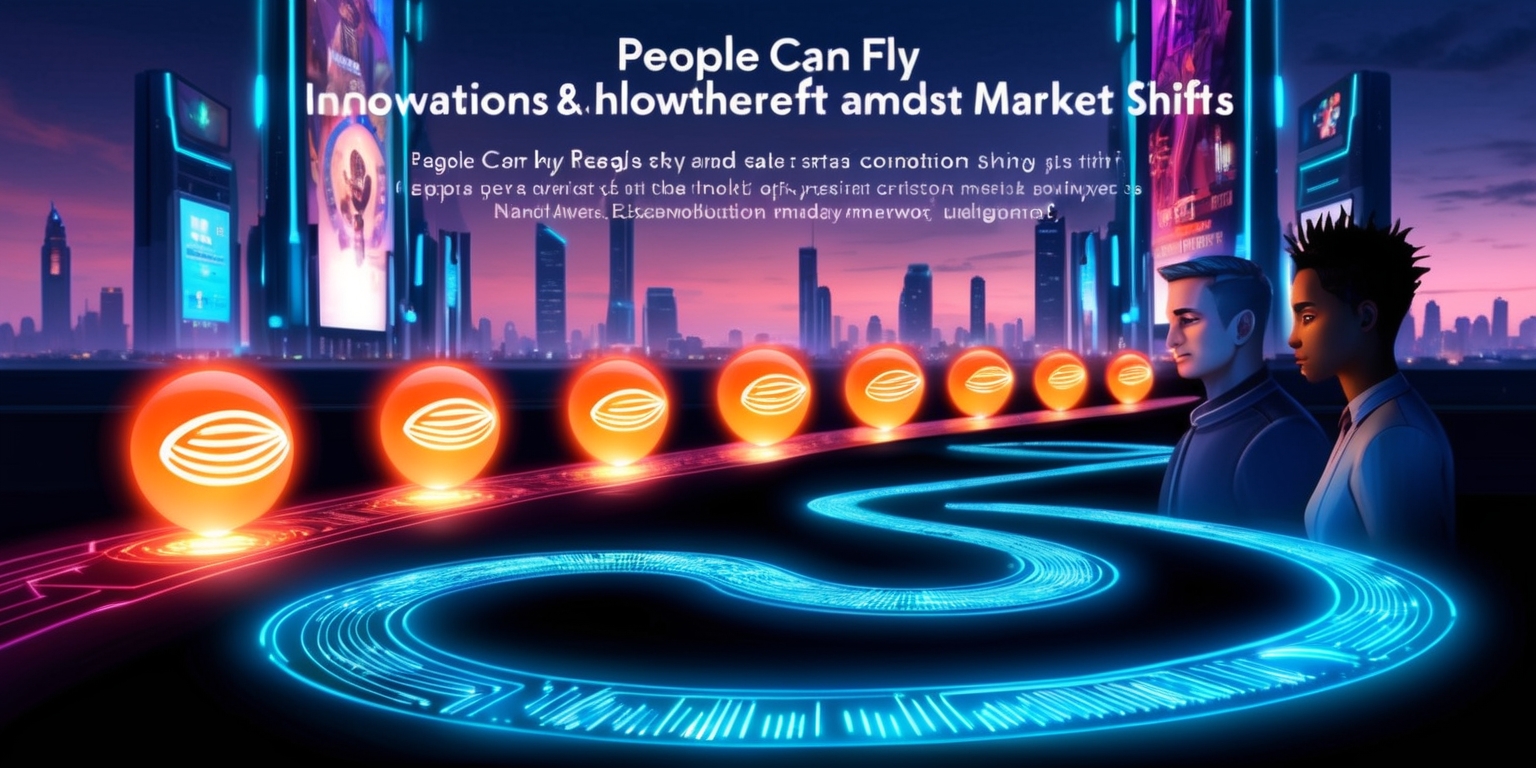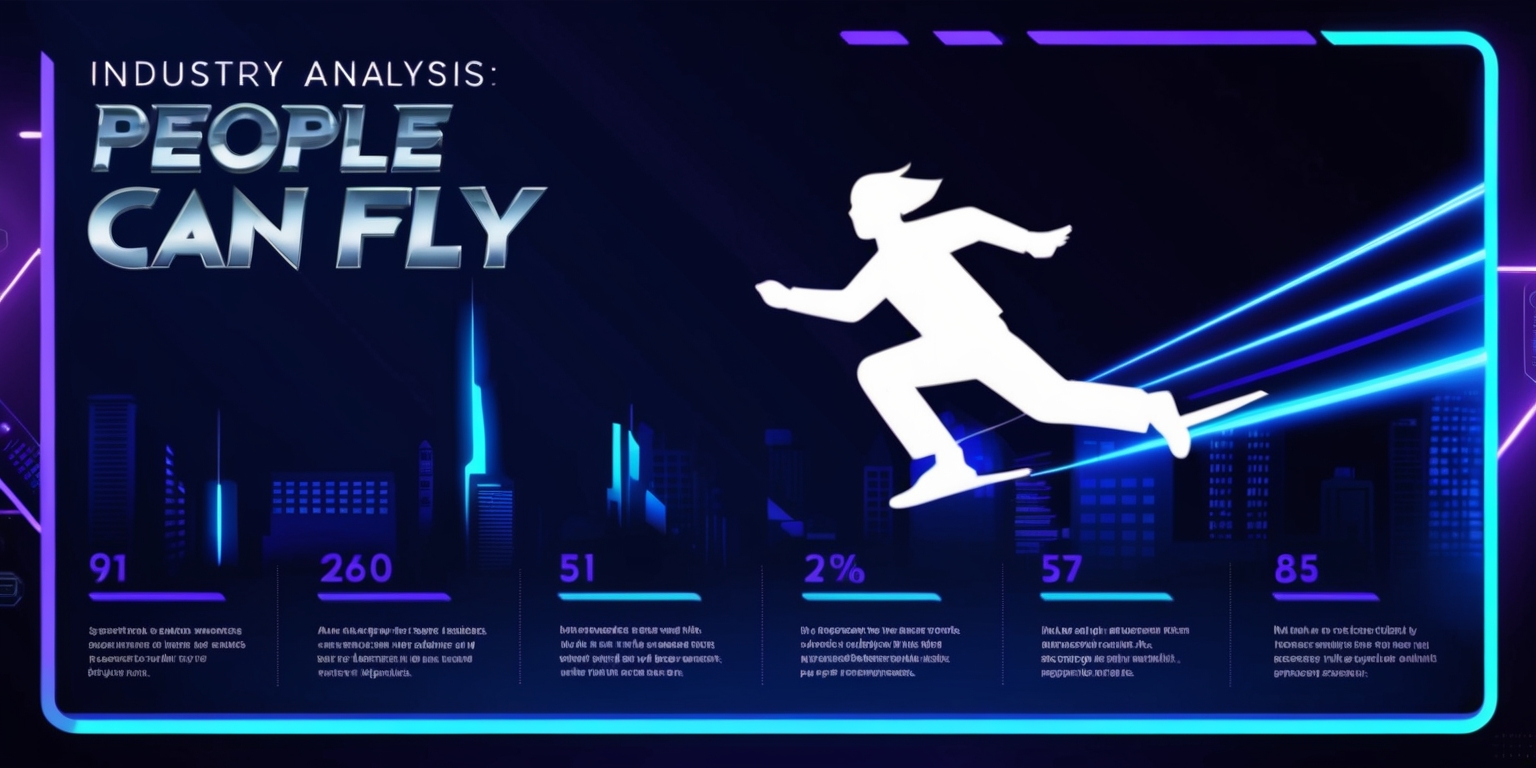People Can Fly's Evolution: Innovation and Resilience Amid Market Shifts
- Jul 07, 2025
- 475

The current landscape in game development is evolving rapidly as studios face unexpected challenges and adjust Their adaptive tactics in response to evolving market conditions. Recent industry updates have cast a spotlight on People Can Fly, a studio known for its contributions to major titles. Changes affecting multiple projects and team structures have resonated through the community, Instigating a more comprehensive analysis of the essential factors driving these decisions. The dialogue between creative vision and business realities has grown even more complex, and the studio’s journey now reflects both the ambition and obstacles inherent in today's fiercely competitive gaming environment.
Industry Transformations and the Ripple Effect
Recent developments within People Can Fly serve as a compelling window into the challenges game developers face in a modern, interconnected industry. With projects being halted and organizational shifts underway, the studio’s situation highlights the unpredictable interplay between ambition and external business pressures. As studios strive to balance creative innovation with fiscal responsibility, decisions to suspend high-profile projects are reflective of broader market trends. The suspension of key titles, in response to communication breakdowns with publishers, illustrates the intricate dependencies across the current gaming ecosystem. Industry observers are noting that these circumstances have a profound impact not only on in-house teams but also on the future pipeline of experiences expected by fans and players alike.
Communication Gaps and Their Consequences
The abrupt halting of development on Project Gemini and Project Bitfrost stems largely from unclear communication and stalled negotiations with respective publishers. The absence of critical feedback and deliverable drafts from the publishers has stymied progress, leaving People Can Fly with the difficult choice to suspend these projects. In an industry where timely feedback is central to overcoming development hurdles, the breakdown has not only affected timelines but also the deeper strategic trust between collaborators. The ongoing dialogue, or lack thereof, has forced the studio to reexamine its commitments and to question the foundations upon which certain projects can realistically be built. This pause in creative endeavors underscores a recurring theme: the pivotal role of clear communication in ensuring a project's viability.
Financial Realities and Strategic Downscaling
In parallel with issues in external communication, financial pressures have also necessitated critical organizational adjustments within People Can Fly. An internal analysis of the studio's cash flow revealed that sustaining long-term development for projects like Bitfrost would require more robust funding and a reassessment of resource allocation. This financial reality has compelled management to make tough decisions regarding team sizes and overall production capabilities, thereby leading to scaled-back operations. The careful balancing act of securing financial stability while attempting to maintain creative standards presents a complex challenge for many game studios. Consequently, these operational shifts not only impact project timelines and Not only do they supply crucial resources, but they also assume an essential role in shaping the future strategic direction of the studio.
Suspended Projects and Their Creative Ambitions

Project Gemini and Project Bitfrost were projects laden with creative promise and technical innovation, making their suspension a notable loss for the developer and its supporters. Each project was envisioned to push boundaries in terms of gameplay mechanics, story integration, and aesthetic presentation within immersive worlds. The interruptions have halted promising experiments and potential breakthroughs in interactive entertainment, underscoring the fragile nature of ambitious game development in an ever-demanding market. The halted progress is a stark reminder that even well-planned ventures can face insurmountable challenges when project management, publisher commitments, and financial forecasts do not align. Fans of these promising titles are now left to wonder about the unrealized visions and innovations that might have transformed the gaming experience.
Creative Vision Versus Operational Hurdles
The creative teams at People Can Fly have They have consistently been lauded over time for their distinctive approach to storytelling and immersive game mechanics, traits that have defined many standout titles over the years. However, the recent setbacks bring to the fore the stark contrast between creative aspirations and operational realities. The visual aesthetics, character designs, and interactive elements that were to define projects like Gemini and Bitfrost now stand as what-could-have-been examples of artistic ambition curtailed by practical obstacles. The studio’s journey reflects the broader narrative of game development where innovative ideas must continuously fight to align with production constraints and evolving market conditions. Such experiences highlight the need for robust planning and resilient infrastructures that can support visionary projects even in turbulent times.
Collaborative Ventures and Multi-Studio Partnerships
Even as some projects hit developmental roadblocks, People Can Fly maintains ongoing collaborations with prominent partners such as Krafton, Sony, and Microsoft. These partnerships are crucial in sustaining a diverse portfolio, illustrating the intricate network of relationships that defines the modern gaming industry. For instance, while the studio reassesses its internal projects, ongoing efforts in Project Echo, Project Delta, and Gears of War: E-Day continue to gather momentum under the guidance of their respective partners. Each collaboration brings together varying design philosophies, technical expertise, and market ambitions. The interdependence of these projects on strong multi-studio partnerships emphasizes the importance of strategic alliances. This interconnected approach, while complex, enhances the overall creative and operational potential across the board, offering a counterbalance to recent project suspensions.
Innovation in the Midst of Adversity
Facing the prospect of halted development on certain fronts, the team at People Can Fly has had to harness innovation in unexpected ways. The challenges brought on by stalled publisher engagement and constrained funding have prompted the studio to reassess its production methodologies and explore alternative creative solutions. This period of reflection and restructuring is not just a setback but also a potential incubator for fresh ideas. In this shifting landscape, the emphasis has turned towards maximizing existing resources, nurturing core team talents, and refining project scopes. Such adaptive strategies are critical in an industry where delays and unpredictability are more common than the neatly scheduled, fully-supported releases of the past. Here, the drive to innovate "stands as unmistakable evidence of unwavering fortitude and" resourcefulness that often emerges in the face of adversity.
Interactive Experience and Design Considerations
The halted projects were highly anticipated to offer groundbreaking interactive experiences designed to captivate players through detailed environments and nuanced narrative arcs. Fans had been eagerly watching for innovations in gameplay loops, environmental interactivity, and character development that could have redefined viewer engagement. From detailed textures and intricate lighting designs to dynamic physics and layered storytelling, the creative vision promised to deliver not just a game but a fully immersive world. By drawing on the unique strengths of People Can Fly, these titles were set to explore new frontiers in digital entertainment. Despite the projects coming to a halt, the episode underscores how delicate the balance is between pushing creative boundaries and aligning with controlled production schedules mandated by financial and communicative constraints.
Industry and Community Reactions
When news of the project suspensions and planned workforce adjustments broke, industry insiders and community members alike took notice of these challenging developments. Social media platforms, forums, and industry analyses have become abuzz with discussions focusing on the ripple effect such decisions carry through the broader gaming landscape. Observers note that the situation reflects a tension between the high demands of fans for innovative gameplay and the inherent risks of ambitious game development. The studio’s acknowledgment of these obstacles and its efforts to ensure responsible scaling of its operations have sparked a conversation about the delicate art of balancing creative ambitions with pragmatic business decisions. This reaction has opened up an ongoing dialogue about sustainable practices in game production, one where both artistry and pragmatism must find common ground.
Legacy and Future Perspectives for Established Franchises
The suspension of certain projects contrasts sharply with People Can Fly’s continued work on well-established and newly emerging franchises. Notably, titles like Gears of War: E-Day continue to move forward with the support of major partners, reminding us that legacy franchises have their own unique development cycles. These projects are designed to both honor the series’ historical appeal and integrate fresh, modern mechanics that address the evolving preferences of players. By allocating resources strategically, People Can Fly is ensuring that its contributions to the franchise continue to be at the forefront of technological innovation and design. The execution of these large-scale endeavors brings into focus the complex nature of managing multiple projects concurrently, each grappling with its own distinct set of development realities.
Restructuring and Its Impact on Team Dynamics
The decision to significantly reorganize the studio by scaling down teams has far-reaching implications that extend beyond mere operational logistics. At its core, this restructuring touches on the emotional and creative dynamics among the individuals who have collectively built the company’s legacy. Staff members, many of whom contributed passionately to past triumphs, now face a period of uncertainty and transition. Such shifts often prompt introspection about the nature of creative collaboration and the balance between ambition and sustainability. The reconfiguration of team sizes and project priorities It represents a carefully considered tactic designed to secure long-term benefits-term survival in a fiercely competitive market. In this process, the human element of game development—innovation, teamwork, and resilience—remains as integral as ever.
Prospects Amid Challenges and Evolving Strategies
The journey ahead for People Can Fly is paved with both challenges and opportunities. With core projects continuing to evolve under collaborations with major industry players, the studio is simultaneously setting the stage to reevaluate and refine its internal processes. While suspended projects evoke a sense of lost potential, they also serve as catalysts for strategic realignments aimed at fortifying future initiatives. The experience is reshaping the studio's approach to decision-making, influencing how resources are allocated and creative ideas are pursued. Despite the setbacks, the path forward is characterized by an unwavering commitment to innovation, quality, and the deep passion that has long defined the studio’s work in the gaming industry. This transformative phase is realigning priorities and establishing a robust foundation for future accomplishments.
